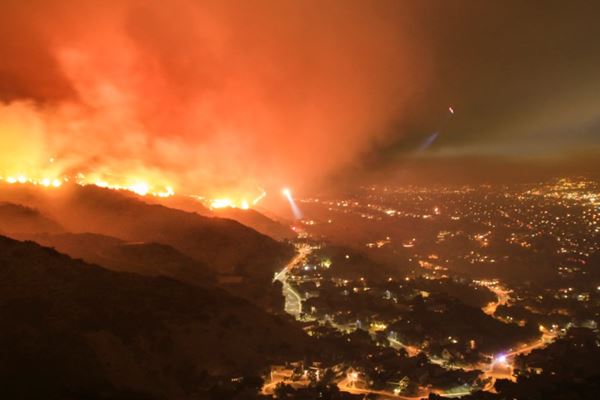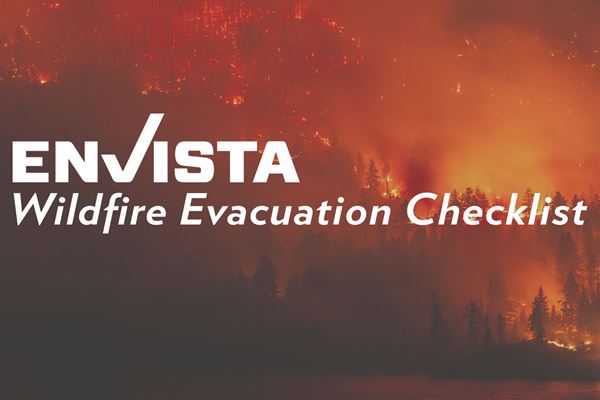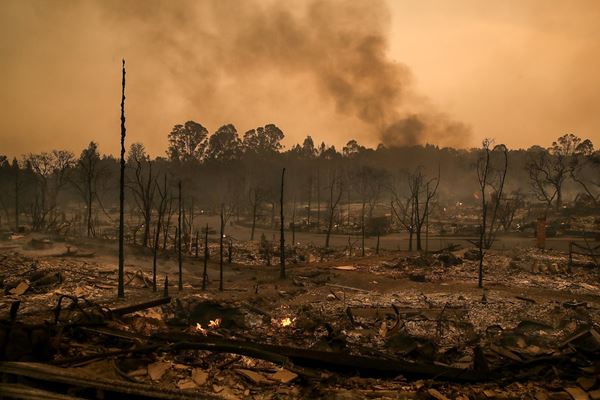Preventing Fires in the Wildland Urban Interface

Fires work on the same principles now as they did from the beginning of time; fuel, heat, oxygen, and the chemical reaction of those three components. Oddly enough, we have been fighting fires almost the same way for just as long; put the wet stuff on the red stuff or take away the fuel. Simple, right? Well preventing fires in the Wildland Urban Interface (WUI) becomes a much larger and more complex conversation, as there are many other factors that contribute to fire spread in our modern world.
For those of you who are not familiar, the WUI includes areas where human development is rising among wildland and vegetation. People have been using WUI maps for more than 30 years to assess fire risk areas, but that wasn’t always the case. Before the colonization of North America, wildfires had little impact on mankind. Similar to today, wildfires were mostly caused naturally, for example by lightning strikes, but unlike today where we are able to quickly put fires out, whole forests would burn down and subsequently regrow over decades without much notice.
Even in more modern-day times, wildfires in the forests and foothills make less impact because of the limited amount of development in those areas. Society didn’t have preventive processes in place like we have today, such as forest clearing and management. Additionally, our way of life is much different, and today, due to human error, accident, or sheer malice, humans are one of the number one causes of wildfires. Yet, as our world becomes more populated and communities continue to pop up in the WUI, the cause for concern rises surrounding people and property.
Do Typical Safety Guidelines Work in the WUI?
Most fire agencies have put out fire prevention tips, guidelines, and codes, which can work well when the population follows them, such as keeping 100 feet of defensible space and trimming back vegetation. Using these simple guidelines can help save a structure in the event of a wildfire. However, from firsthand experience, we know more about wildfires today than we used to and although helpful, these tactics don’t always work.
The Threat of Floating Embers
In today’s WUI, there are many different types of fuels and various highly combustible products. Even natural fuels have become more easily ignited due to climate conditions or massive die-offs from infestations. A floating ember can take less heat to ignite a combustible material if the humidity is extremely low and the temperatures are higher, as it usually is in California – a common area of wildfires. This is how most fires start and spread when we are talking about the WUI, a simple ember.
Controlling Wildfires in the WUI
Wildfires are all too common and high-risk areas that can be affected by wildfires need to update their fire prevention processes. Some effective ways to aid in the prevention or control of wildfires in the WUI include:
- Rebuilding WUI cities and properties with upgraded codes. Codes don’t always apply to stored items on the exterior of the structure and not all codes require the use of non-combustible material.
- Building structures from non-combustible material will protect them from an exterior fire. Replacing combustible items around the structure with non-combustible materials could limit embers from spreading fire.
- Adding fire protection planning to the exterior of a building in a WUI zone, such as removing heavy vegetation growth close to a structure or requiring a stand-alone exterior fire system. A simple water misting system could save an entire structure, as a small amount of water (less than a gallon) can stop a smoldering fire.
- Avoiding the storage of combustible materials on the exterior of structures.
- Performing controlled burns during the winter and rainy months around communities in the WUI to clear debris and combustible, dry, or dead vegetation.
As the WUI continues to grow, it is important to develop better prevention and protection systems from fires. Property owners need guidance and leadership to help prevent these types of fires, as firefighting personal is not always going to be available to extinguish a fire, especially in the first couple hours of a wind-whipped fire. Until we make the changes listed above, start requiring stricter standards, and rebuild communities in the right ways, we can expect wildfires to continue burning down numerous structures.
Please note, this article was written from a California Firefighter’s point of view. Some conditions in the west coast area will not be the same as on the east coast.
Nuestros consultores están listos para ayudar.




